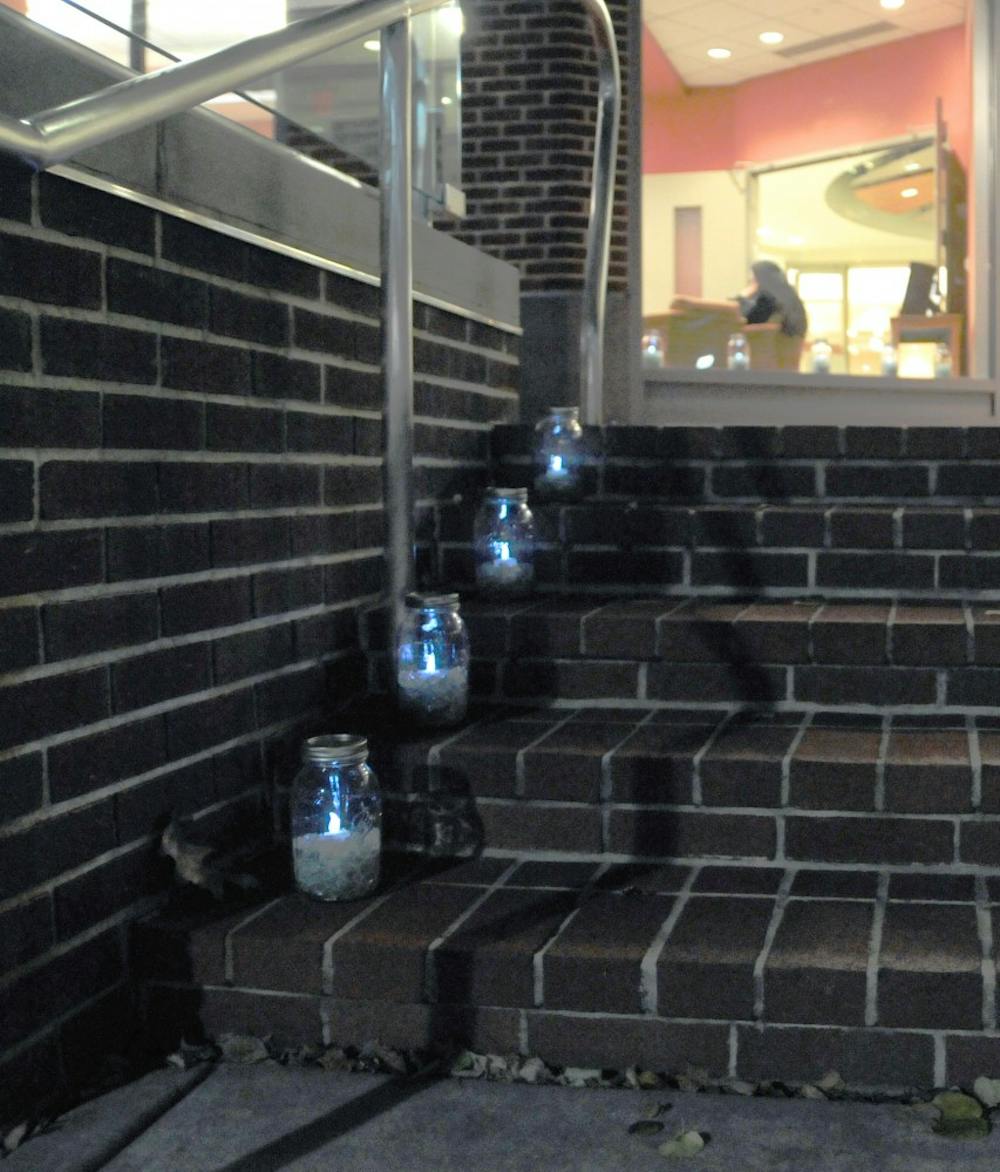Seventy-four years after the Nazis destroyed over 7,000 Jewish businesses on the night known as Kristallnacht, Hillel’s Holocaust Education Committee is finding creative ways to commemorate the victims.
Kristallnacht — or the Night of Broken Glass — took place on Nov. 9 to 10, 1938, when the Nazis attacked Jewish-owned stores, buildings and synagogues in Germany. It is often cited as one of the first major events of the Holocaust.
On Sunday, the committee installed 24 glass jars filled with shards of broken glass and an artificial candle in front of Hillel’s Steinhardt Hall. The glass shards represent the windows the Nazis destroyed on Kristallnacht, and the candle functions as a sign of mourning. The installation will remain intact until the end of the week.
“We wanted to do something simple yet powerful,” College freshman Ally Zucker, a member of the Holocaust Education Committee, said. Zucker came up with the design for the installation.
“We wanted to incorporate broken glass and do something visual so that people who didn’t know what the day was would be able to see the installation and learn about what happened,” Zucker added.
In past years, the committee has placed broken mirrors on Locust Walk in order to inform students about the events of Kristallnacht.
“The broken mirrors were jarring and graphic,” College senior and co-chair of the Holocaust Education Committee Alexa Bryn said. “It wasn’t about art. It was more to make a statement.”
This year, the committee decided they were “more interested in having something more artistic,” Lianna Brenner, College senior and a co-chair of the Holocaust Education Committee, said.
“This installation juxtaposes something beautiful to memorialize something horrific,” Bryn said. “At first it just looks artistic, but then you realize that it has an added layer of history behind it.”
Last night, the committee invited English and art history professor Aaron Levy to lead a discussion at Hillel about the relationship between art displays and memory in commemoration of Kristallnacht.
Levy, who has a taught a course on the politics of memory in the past, focused his discussion on how memorials can function to enable action in the present.
“There is no one way to remember and no one form [of a memorial] that would put an end to our responsibility to remember,” Levy said. “Memorials are often understood as static or fixed forms that remember for us, but we can also see them as opportunities to engage memory in the present.”
Because the last generation of Holocaust survivors will not be alive for much longer, Levy emphasized the need to continue to memorialize the event.
Through the Kristallnacht installation, the committee’s hope is to make sure that the stories of both the survivors and the victims are told and that people on campus will actively be able to remember the events of past.
“The survivors won’t be around forever, but art is eternal,” Zucker said.



